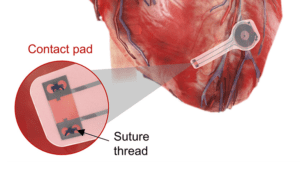Wireless, battery-free, fully implantable pacemakers made of bioresorbable components could represent the future of temporary pacing technology.

Flexible, dissolvable electronics could soon pave the way for temporary pacemaker wearers to avert the risks associated with surgical procedures from initial implantation to the removal of the device once its job is done.
Northwestern and George Washington universities have developed what they say is the first-ever transient pacemaker that’s not only wireless, battery-free and fully implantable — but also disappears when it’s no longer needed. Its biocompatible components can naturally absorb into the body over five to seven weeks eliminating the need for surgical removal.
In a study published on June 28 in Nature Biotechnology, researchers demonstrated the device’s efficacy across a series of large and small animal models. They cited several critical needs for an alternative, temporary pacemaker technology that can deliver the needed electrotherapy while addressing the associated physiological complications.
Northwestern Engineering’s John A. Rogers led the device’s development.
Get the full story on our sister site Medical Design & Outsourcing.